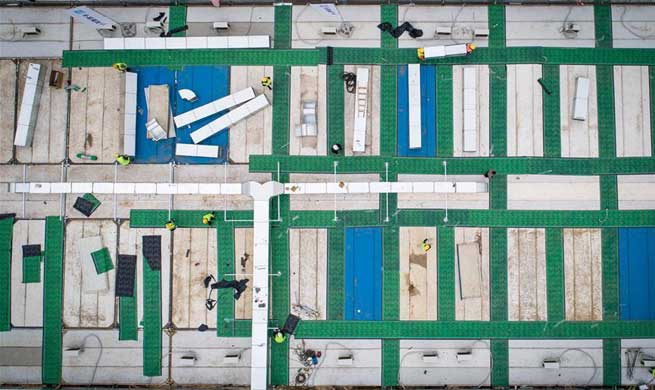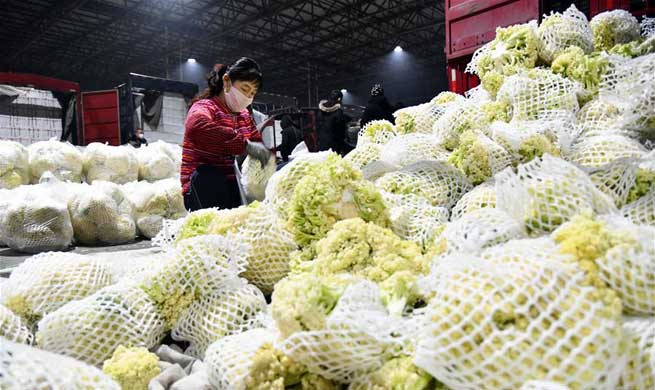ROME, Feb. 1 (Xinhua) -- For Venice, Italy's canal city, the past year has been like a roller coaster ride - from worrying about being overrun with tourists to wondering when they'll come back.
In between those two stages, the city was hit by the worst flooding it had seen in more than 50 years. Waters rose to 187 centimeters above normal levels, causing two deaths and incalculable damage to the city's cultural, historical, and architectural riches. The flooding made worldwide headlines, scaring away many tourists.
Lidia Fersuoch, president of the advocacy group Nostra Venezia, has been saying for years that Venice is at risk: the number of actual residents in the city has been declining for decades, pushed out by high costs and the inconveniences that come from living in a city made up of 118 separate islands. Officially, she said, the city's population is around 52,000, though it is unknown how many of them are "ghost" residents who maintain a home in Venice but spend most of their time elsewhere.
Fersuoch believed that the floods had pushed the feeling of Venice's slow demise to a new level.
"After the flooding subsided in December, I had never seen it so empty," Fersuoch told Xinhua. "It was a tangible feeling, like an abandoned city."
Last summer, the city's leaders began charging a special tax of 3 euros (3.35 U.S. dollars) per day to tourists who visited the city for the day as a way to help offset costs for essential services, like maintaining the city's infrastructure and collecting garbage. The fee is expected to double this year.
Luigi Brugnaro, mayor of Venice, said then that the tax was also aimed at curbing the high number of tourists who visit the city for a few hours and then leave without contributing to the economy. According to figures from the city, more than 30,000 passengers from cruise ships disembark in the city each day during the April-to-October high season. In August, the busiest month for tourism, nearly 500,000 tourists come to the city every day.
"The risk is that over time, Venice will be like an open-air museum and that it will give up the last vestiges of being a real city people live in," Fersuoch said.
Now, worried that tourists may be put off from visiting the city by all the news coverage of the floods, the city is hoping the upcoming carnival season will help draw them back.
The Venice Carnival, which runs this year on Feb. 8-25, is celebrated in many parts of the world, but the Venetian version is among the most famous. The city has a full series of events planned for the period, as well as special trains to bring people in from other parts of Italy and even beyond Italy's borders.
Among the events scheduled are ice skating, a multi-day on-the-water festival, a series of gala balls, and activities celebrating the historical aspects of the carnival.
"Venice is ready to welcome people for carnival," said Brugnaro, the mayor, adding "The city is on its feet again."
Mario Piana, a professor of architectural restoration at the University Institute of Architecture Venice, said the city should continue to focus on its long-term viability even as it works to attract new tourists.
"We don't know all the impacts of the overtourism and the floods," Piana said in an interview. "When you see things breaking down it's too late. The impacts accumulate and show up over time. We have to work to prevent problems rather than fix them."













